10 Best Adventures of 1959
By:
October 14, 2019
Sixty years ago, the following 10 adventures — selected from my Best Nineteen-Fifties (1954–1963) Adventure list — were first serialized or published in book form. They’re my favorite adventures published that year.
Please let me know if I’ve missed any adventures from this year that you particularly admire. Enjoy!
- Eric Ambler’s Robinsonade/crime adventure Passage of Arms. At the tail end of the so-called Malayan Emergency — a guerrilla war fought by the Malayan National Liberation Army and the military arm of the Malayan Communist Party — a Tamil plantation clerk discovers a cache of arms abandoned by Communist insurgents in the Malayan jungle. Looking to raise money (in order to start his own local bus service), he collaborates with Chinese brothers — located in Malaya, The Philippines and Singapore — in transferring the arms to Indonesia. When the shipment is held up, en route, a representative of the family offers to pay Greg Nilsen, who runs a small manufacturing company in Baltimore, a handsome fee if he’ll travel to Singapore to act as the shipment’s bonded recipient. Nilsen and his wife, Dorothy, were on a South China Sea cruise at the time, but he was looking for more excitement. He finds it! Although this is a slow burner, Nilsen will learn more than he ever wanted to know about the shipment of illegal weapons across borders as he encounters Communist agitators, anti-Communist rebels, prison and probable torture on Sumatra. (He’s not the quiet American — just a thoughtless, thrill-seeking one — though Graham Greene’s novel is referenced, humorously.) I’ve classified it as a crime adventure, but Passage of Arms has also been described as a travelogue that turns into a horror story; and there’s enough here about the Tamil clerk’s aspirations to qualify it as an entrepreneurial Robinsonade à la Nevil Shute. The real action takes place in the final third of the book; there is a battle scene which no doubt owes its authenticity to Ambler’s wartime service. Fun facts: Ambler, who’d introduced a new realism to the espionage thriller genre with his 1936–1940 output before enlisting in the British army during WWII, would later often turn to stories involving corporate-political shenanigans in exotic Third World settings. This is the first example the second, post-war phase of Ambler’s oeuvre. PS: The book’s title is a pun on the 15th-century “passage of arms,” a knight’s challenge to traveling knights.
- Ross Macdonald‘s Lew Archer crime adventure, The Galton Case. Mrs. Galton, a wealthy woman near the end of her life, hires suburban Los Angeles private eye Lew Archer — this is his eight outing — to track down her prodigal son, Anthony, from whom she has been estranged for 20 years. It seems that a chunk of the Galton family fortune went missing, along with Anthony — so this is a treasure hunt, as well as a whodunit and a psychological thriller. The story takes Archer to San Francisco, to a small town on the California coast, and to Detroit; his quest gets tangled up with the mysterious death of Peter Culligan, houseman to Mrs. Galton’s lawyer, Mr. Sable. As with most Archer stories, the crime in the present is linked to a crime in the past; Oedipal dynamics, childhood trauma, and tortured psychologies are Macdonald’s bread and butter. The book’s prose style is pure pleasure, and its plot structure is carefully considered — nothing is as it seems. Fun facts: Ross Macdonald (Kenneth Millar) has been called the heir to Dashiell Hammett and Raymond Chandler as the master of American hardboiled mysteries. In a 1973 interview, he would recount that “I was forty-two when I wrote The Galton Case. It had taken me a dozen years and as many books to learn how to tell highly personal stories in terms of the convention I had chosen.”
- Shirley Jackson’s psychological/occult thriller The Haunting of Hill House. Dr. Montague, an investigator of the supernatural, rents Hill House — an isolated, supposedly haunted manion, in an unspecified location — for the summer. He brings along Luke, a handsome and wealthy young man who will one day inherit Hill House, as well as two women who have experienced the paranormal: Theodora, a flamboyant, bohemian artist; and Eleanor, a shy young woman who has been living as a semi-recluse while caring for her mother. Eerie events transpire: there are unseen noises, ghostly apparitions, strange writing on the wall. Eleanor, in particular, experiences phenomena to which the others are oblivious — but is she imagining some, or all of it? Or might Eleanor possess a subconscious telekinetic ability that is causing some or all of these manifestations? Jackson’s prose style is extraordinary: objective to an alienating degree, early on, as though to illuminate the inherent oddness of a scientist’s viewpoint; later, increasingly fraught. The house itself isn’t described, in physical terms; but it’s an important character in the book — a lonely, possibly insane presence that almost seems to have been waiting for Eleanor to arrive. A foolish, yet insightful character, Mrs. Montague, shows up at a certain point — for comic relief? Or is she a Shakesperean fool? When it finally becomes clear that Eleanor must leave Hill House, the question is… can she do so? In time? Fun facts: Jackson is probably best known for her short story, “The Lottery” (1948). The Haunting of Hill House is considered one of the greatest haunted house tales ever written; it was an important influence on The Shining. Robert Wise’s 1963 film adaptation, The Haunting, stars Julie Harris, Claire Bloom, Richard Johnson, and Russ Tamblyn. There’s also a 2018 TV miniseries from Netflix.
- Daniel Keyes’s Golden Age sci-fi adventure Flowers for Algernon. Charlie Gordon has an IQ of 68. The 32-year-old does menial work for a living, and attends reading and writing classes at the Beekman College Center for Retarded Adults. Two Beekman researchers have succeeded in dramatically increasing the intelligence of a lab mouse (Algernon), through experimental brain surgery; and Charlie is selected as their first human subject. The novel is epistolary — we’re reading Charlie’s own progress reports. When his IQ dramatically increases to genius level, Charlie realizes how poorly the people in his life have treated him… except for Alice, his beautiful reading teacher, on whom he has an unrequited crush. Charlie’s own research into the intelligence-enhancing procedure he’s undergone suggests that it is flawed… and when Algernon reverts to his previous intelligence, then dies, he’s convinced that he is doomed. How will he choose to live, now? Fun fact: First published, as a story, in the April 1959 issue of The Magazine of Fantasy & Science Fiction; it won the 1960 Hugo. The 1966 novel version was joint winner, with Babel-17, of the Nebula. Cliff Robertson won the Oscar for his portrayal of Charlie in the 1968 film Charly.
- René Goscinny and Albert Uderzo’s Asterix comic Astérix le Gaulois (Asterix the Gaul, serialized 1959; as an album, 1962). In 1958 Goscinny, who in the late 1940s had shared a New York studio with future MAD contributors Will Elder, Jack Davis and Harvey Kurtzman, and Uderzo began serializing Oumpah-pah — a cartoon about an American Indian whose village was bravely holding out against the palefaces — in the Franco-Belgian comics magazine Tintin. The following year, the two men became editor and artistic director of Pilote magazine, which was intended to appeal to adults as much as to children. Here, they introduced a cartoon about Astérix, a Gaul whose village was bravely holding out against the Roman occupiers. (Vercingetorix, leader of the Gauls in a notable rebellion against Julius Caesar in the late 50s BC, is revered in France as the original French resistance fighter.) Centurion Crismus Bonus, commander of a Roman garrison at the fortified camp of Compendium, sends a spy disguised as a Gaul into Astérix’s village — to discover the secret of their indomitability. When the spy reports that the Gaul’s druid, Getafix (Panoramix in the original French version), brews a potion conferring magical strength on its users, the druid is kidnapped; Astérix sneaks into the Roman camp, and he and Getafix play pranks on the Romans… until Caesar himself arrives! The combination of sophisticated word-play, historical and contemporary social and political commentary, slapstick comedy and violent punch-ups is irrestisible; the series was an immediate success. In this story, we also meet the characters Obelix, Vitalstatistix, Cacofonix (Assurancetourix), and others for the first time — it’s fun to observe how they’ve evolved. Fun facts: In France, Astérix is the most popular comic of all time — more so than Tintin, even. (When Goscinny died in 1977, it was, in the words of one French obituary, “as if the Eiffel Tower had fallen down.”) The English translations of the Astérix books, by Anthea Bell and Derek Hockridge, are impressive — their wordplay is just as clever.
- Kurt Vonnegut’s Golden Age sci-fi adventure The Sirens of Titan. What if? A space explorer — Rumford — were to stumble into a chrono-synclastic infundibulum (a spiralling point in space/time “where all the different kinds of truths fit together”), and as a result, became omniscient about past and future happenings throughout the galaxy? If the richest man in the America of that distant future — Malachi Constant — were to cross paths with Rumford on Titan, in the midst of humankind’s preparations for an interplanetary war, what would Rumford tell him about free will, God, and the purpose of human history? (Could humankind’s progress in fact be pointless and pathetic?) If Rumford (and his dog, Kazak) were to materialize on Earth and other planets, at various points in history, would he for some reason instigate a Martian invasion? Would he start a religious movement — the “Church of God the Utterly Indifferent” — in order to unite humankind after the invasion? (Hello, Ozymandias from Watchmen.) And why? A (mostly) bleak and ironic mini-epic, post-Olaf Stapledon and pre-Douglas Adams. Fun fact: Vonnegut sold the Sirens of Titan film rights to Jerry Garcia of the Grateful Dead. The movie adaptation was never made.
- Richard Condon’s political thriller The Manchurian Candidate. Several years after Bennett Marco, Raymond Shaw, and the rest of their Korean War infantry platoon were captured by a Soviet commando unit and held captive in Manchuria, Marco suffers from a recurring nightmare. In it, sweet little old ladies, who are somehow also Chinese and Soviet officials, command Shaw to murder two of his comrades. But Shaw is a hero; and those two men died in combat… right? Marco — now an Army Intelligence officer — looks up Shaw, whose stepfather is a prominent McCarthy-esque politican, Senator Johnny Iselin — and the two men become friendly. Marco gets involved with a supportive woman, Rose, while Raymond falls for the girl next door. Jocelyn is the daughter of Senator Jordan, a political foe of Iselin’s; Raymond’s ambitious, domineering mother Eleanor disapproves… but Raymond continues to see Jocelyn. Meanwhile, Marco uncovers an audacious plot — backed by the Communist powers — to install an American president of their choosing, who will become their stooge! Raymond is an unwitting participant in this nefarious scheme. Can Marco get to the bottom of the plot before it’s too late for Raymond… and America? Condon’s prose style is strong medicine; there are verbal pyrotechnics to complement the mind-bending plot. Fun facts: Several passages of the novel, it has been suggested, were plagiarized from Robert Graves’s 1934 novel I, Claudius. The Manchurian Candidate was adapted by John Frankenheimer as an excellent 1962 movie starring Frank Sinatra, Laurence Harvey and Janet Leigh, with Angela Lansbury in a chilling role. There is also a 2004 remake starring Denzel Washington.
- William Burroughs‘s Golden Age sci-fi adventure Naked Lunch. Where to begin? Anywhere — Burroughs employed the Dadaist “cut-up” technique — cutting up and rearranging, at random, the elements of a text — in order to produce a productively alienating effect on the reader. In this semi-autobiographical sci-fi detective novel and work of pornography and political satire, William Lee, a drug dealer and addict, flees from the police to Mexico. He is instinctively determined to avoid the normalizing apparatuses of the police, psychiatrists, and government. In Mexico, however, is assigned to the sadistic Dr. Benway, formerly a “Total Demoralizator” from the fictional totalitarian country of Annexia (which has a system of random bureaucracy that keeps its population in fear of arbitrary punishment). As Lee continues to travel south, he encounters fellow homosexuals and drug dealers, whom he calls “agents.” Aliens, imaginary drugs, telepathy, talking objects — the science fiction tropes are legion, although the context isn’t futuristic. Hallucination-like sequences take place in the Interzone, a temporary autonomous zone where nothing is true, and everything — including every kind of violence and sexual act, even involving children, is permitted. Fun facts: First published by Olympia Press, in Paris. The 1962 American edition, from Grove Press, was one of the last books to be banned in Boston. In 1964, it was the first literary work to successfully test the standards of obscenity enunciated by the Supreme Court in the case of Henry Miller’s Tropic of Cancer.
- Philip K. Dick‘s Golden Age sci-fi adventure Time Out of Joint. Ragle Gumm lives with his sister and her husband in a quiet suburb; the year is 1959. Gumm earns a living by winning — again and again — a local newspaper contest, “Where Will The Little Green Man Be Next?” When odd things start happening — a soft-drink stand turns into a slip of paper that reads “SOFT-DRINK STAND”; he’s sure that the bathroom has a pull-cord light, even though it has always had a wall switch — Gumm thinks he may be having a nervous breakdown. But his brother-in-law begins to notice reality-discrepancies, too. When the two men try to leave town, there’s always something that traps them there. Still, Gumm stubbornly investigates. Are most aspects of his life staged, in order to keep him focused on the “Where Will The Little Green Man Be Next?” quiz? (Because, say, his answers to the quiz help Earth’s planetary defense forces — in 1998 — predict the movements of rebel lunar colonists?) And if so, is what he’s doing critically important to humankind — or is he helping keep a tyrannical social order in place? A minimally sci-fi novel about false reality; an important turning point in the Philip K. Dick’s oeuvre. Fun facts: Obviously an influence on The Truman Show, The Matrix, and Ender’s Game; and more recently, American Ultra. In a 1981 interview, Dick recounted that the bathroom pull-cord incident “happened to me, and it was what caused me to write the book. It reminded me of the idea that Van Vogt had dealt with, of artificial memory, as occurs in The World of Null-A [1948] where a person has false memories implanted. A lot of what I wrote, which looks like the result of taking acid, is really the result of taking Van Vogt seriously!”
- Maurice Tillieux’s Gil Jourdan crime comic Les cargos du crépuscule (English title: Catch as Catch Can). The Parisian private eye Gil Jourdan made his début in a 1956 issue of Spirou magazine. His rather mercenary attitude towards fighting crime, and his ménage — clumsy but effective Inspector Crouton, wisecracking ex-burglar Crackerjack (Libellule, or “dragonfly,” in the original French), and ace secretary Miss Midge (Queue-de-Cerise, or “cherry-stem”) — are strongly reminiscent of Leslie Charteris’s Simon Templar, though Jourdan is more serious, less devilish than Templar. Jourdan’s adventures would take him to South America and the Middle East, but Les cargos du crépuscule, his fourth outing, is set in postwar Paris; it’s a beautifully drawn, eerily atmospheric story — taking place almost entirely at night. Syringe Joe, bank robber who’d sworn revenge against his lawyer, Samson Louc, makes a dramatic escape from prison — leaping thirty feet at a time. Crouton is assigned to protect Louc; Jourdan and Crackerjack offer their protective services for a fee. But Syringe leaps through a second-floor window and carries Louc off! We only catch glimpses of the action — it’s all very “Murders in the Rue Morgue.” Jourdan returns to the scene of the crime, only to be apprehended by yet another character — which results in a dramatic chase through Paris’s docks, and an escape from a blazing inferno through sewer tunnels. Crackerjack and Miss Midge do some investigating, and turn up important clues to what’s really going on; meanwhile, Jourdan finds himself locked into a laboratory freezer… What next? Fun facts: Along with Goscinny and Franquin, Tillieux is considered one of the most important contributors to postwar Belgian comics. In 2011, Fantagraphics reissued the book in English translation, as a double album with the third Jourdan adventure Murder By High Tide.
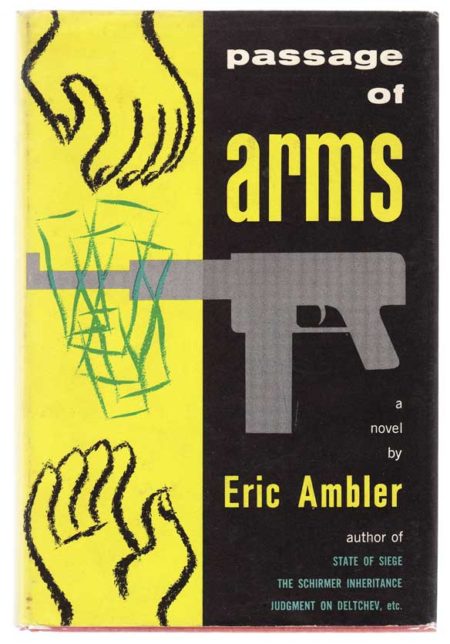
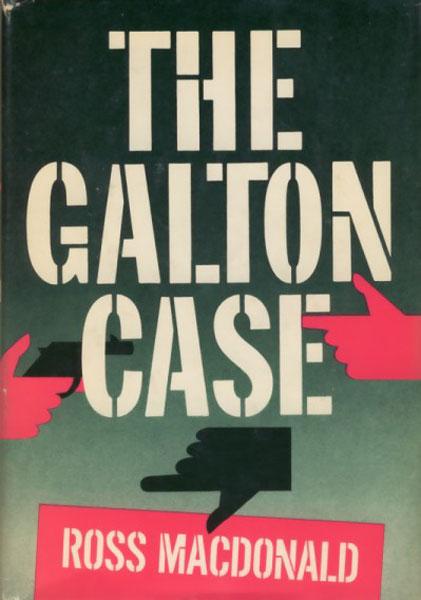


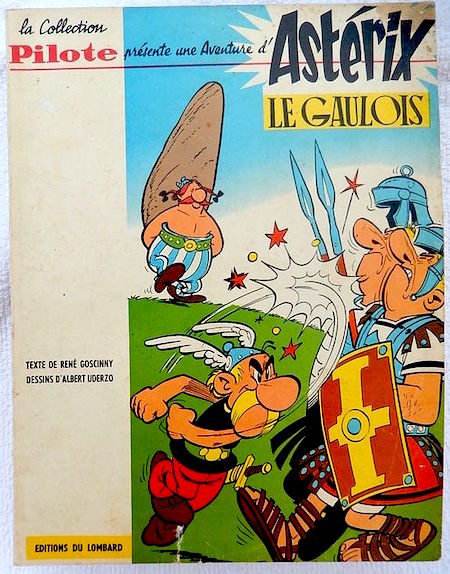
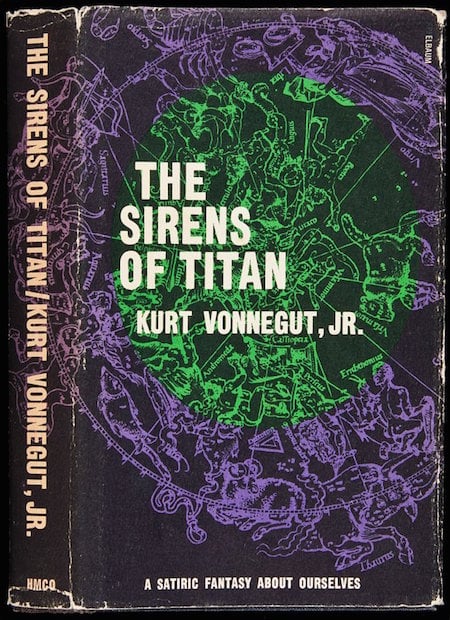
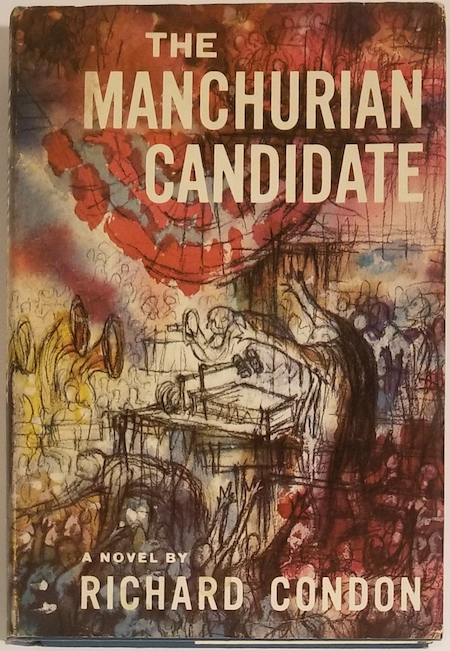
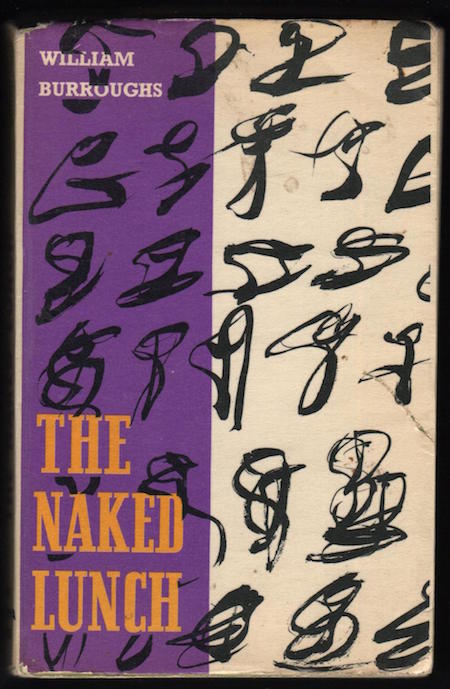
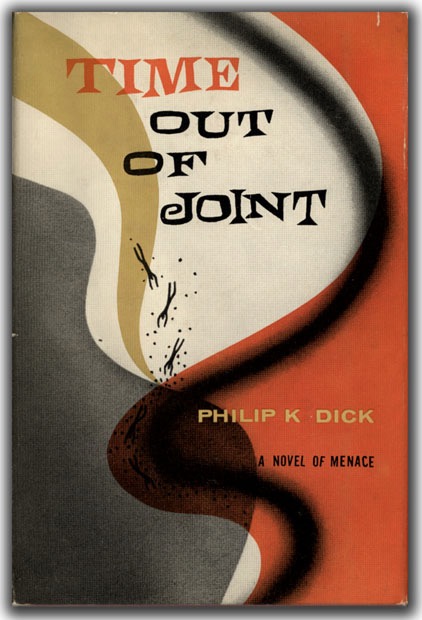
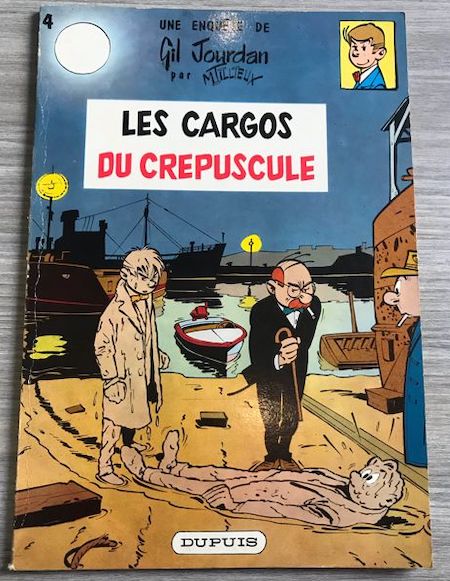
JOSH GLENN’S *BEST ADVENTURES* LISTS: BEST 250 ADVENTURES OF THE 20TH CENTURY | 100 BEST OUGHTS ADVENTURES | 100 BEST RADIUM AGE (PROTO-)SCI-FI ADVENTURES | 100 BEST TEENS ADVENTURES | 100 BEST TWENTIES ADVENTURES | 100 BEST THIRTIES ADVENTURES | 75 BEST GOLDEN AGE SCI-FI ADVENTURES | 100 BEST FORTIES ADVENTURES | 100 BEST FIFTIES ADVENTURES | 100 BEST SIXTIES ADVENTURES | 75 BEST NEW WAVE SCI FI ADVENTURES | 100 BEST SEVENTIES ADVENTURES | 100 BEST EIGHTIES ADVENTURES | 75 BEST DIAMOND AGE SCI-FI ADVENTURES | 100 BEST NINETIES ADVENTURES (in progress) | 1994 | 1995 | 1996 | 1997 | 1998 | 1999 | 2000 | 2001 | 2002 | 2003 | NOTES ON 21st-CENTURY ADVENTURES.
